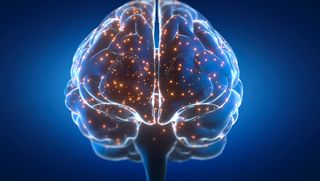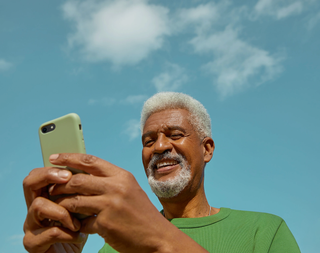Neuroplasticity
How your brain can adapt to new ways of seeing with low vision.


Summary
Your brain is an incredible organ and can often find the most creative solutions to help it adapt to changes in your body. Through a process called neuroplasticity, your brain is able to reorganise the way in which it sees to adjust to changes in your vision. Learn more about how you can work with your brain to make the most of your residual vision.
If you’ve been diagnosed with low vision, it’s natural to wonder how your brain will adjust. The encouraging news is that your brain possesses a remarkable ability called neuroplasticity, which allows it to reorganise and form new connections in response to changes in your vision. This adaptability means that even with reduced eyesight, your brain is actively working to help you navigate, recognise objects, and maintain independence.
How your brain compensates for vision loss
The idea that people with vision loss develop “superhuman” hearing, touch, or smell is a common belief, but it’s not entirely accurate. Neuroplasticity allows the brain to reallocate resources when vision is reduced, which can lead to greater reliance on other senses rather than an actual enhancement of those senses themselves. For example, in people who are blind or have significant vision loss, the visual cortex may start processing auditory or tactile information, making them more efficient at using these senses for navigation or identifying objects. This doesn’t mean their hearing or touch becomes stronger – it means their brain processes and interprets sensory input more effectively to compensate for lost vision.
Research has shown that training and experience play a significant role in these adaptations. For example, individuals who use Braille often show increased sensitivity in their fingertips, not because their sense of touch is inherently better, but because their brain devotes more processing power to interpreting fine tactile details. Similarly, blind individuals who use echolocation (clicking sounds to detect objects) are not hearing better than sighted people – they have trained their brains to interpret echoes in a way most people never do – making these senses more refined and efficient.
When your vision changes, your brain initiates several adaptive processes:
- Improved focus: Studies have shown that individuals who are blind or have low vision often experience improved efficiency in their remaining senses, such as hearing and touch. This enhancement helps in gathering information about the environment through non-visual means.
- Cross-modal plasticity: Research indicates that the visual cortex – the part of the brain responsible for processing visual information, can adapt to process inputs from other senses in individuals with vision loss. This reorganisation allows the brain to utilise auditory or tactile information to interpret the surroundings.
- Cortical reorganisation: In conditions like glaucoma, studies have found that the brain undergoes local neuroplastic changes, adjusting its neural pathways to maximise the use of remaining vision.
Adapting to low vision
Given your brain’s adaptability, engaging in specific training and utilising assistive technologies can enhance your functional abilities:
Learning to navigate your environment using auditory cues, tactile markers, or other non-visual strategies can significantly improve independence. Visit Guide Dogs to find about more about the orientation and mobility services offered by Guide Dogs Australia.
Future research
While future advancements may improve accessibility and function, there is currently no guaranteed way to restore lost vision through neuroplasticity alone. Ongoing research continues to refine assistive technologies and rehabilitation techniques to help people adapt and make the most of their remaining vision.
Ongoing research is investigating potential treatments for certain types of vision loss, including gene therapy and retinal implants, though these approaches are still in development and not yet widely available. Gene therapy aims to modify or replace faulty genes involved in retinal diseases, with some clinical trials showing early promise for conditions like Leber’s congenital amaurosis and retinitis pigmentosa. However, this research is still evolving, and its effectiveness varies depending on the specific condition.
Retinal implants, such as subretinal microchips, are being studied as a way to provide limited visual input for individuals with certain types of blindness. While some patients have reported detecting light and basic shapes, these devices do not restore detailed vision and remain experimental.
Although these advancements represent exciting areas of study, they are not guaranteed solutions for all types of vision loss. Researchers continue to explore how neuroplasticity, assistive technology, and medical treatments can work together to enhance visual function and independence.
Support is available
Adjusting to low vision is a journey but remember that your brain is equipped with the ability to adapt. By embracing training, utilising assistive tools, and allowing yourself time to adjust, you can continue to lead a confident and independent life. If you seek additional support, vision rehabilitation services are available to help you harness your brain’s incredible capacity for adaptation. For more support, get in touch with us at info@seeway.com.au or on 02 8350 1400.
Always speak to your GP and eye care professional about the best treatment options for you.
Did you find this article helpful?
Share your thoughts and help us make our resources better for everyone.
Enjoying the content?
Start building your profile to access personalised support, resources, and tools tailored to your eye health journey.
